Pave the Way to Landscape Style With Flagstone
Define a patio, build a path, make a fire pit ... learn about flagstone's many uses, plus costs and considerations, here
Jenny Peterson
June 7, 2013
Houzz Contributor
Flagstone is a landscape chameleon, one of those materials that is widely used for a great number of garden projects. But because there are so many different types of flagstone, you have some questions to ask when you shop for your project: How much should you get? Why all the different prices? Is this a DIY material, or one that only pros can use?
Here is some basic flagstone information to get you started, but remember to always check with local experts at landscape supply yards for their recommendations for your particular project.
Here is some basic flagstone information to get you started, but remember to always check with local experts at landscape supply yards for their recommendations for your particular project.
Practical Considerations
How it's sold. Flagstone, also called patio rock, is sold by the ton or by the pound, not per piece, and the price varies widely depending upon what type of rock the flagstone is. You can expect to pay anywhere from $140 to $320-plus per ton. The more exotic the rock, the higher the cost, so if your budget is tight, look for a common flagstone that is quarried locally.
Thickness. You will likely flagstone described as thick or thin, and which one you should buy depends upon how you want to use it.
If you intend to lay a flagstone pathway without mortar, you will want to get thick pieces, or those that are 2 inches in height. Thin flagstone is less than 2 inches thick and will crack and break apart if not set into a mortared base. Thicker pieces are also often called "lay-down," because you can lay them directly down on the soil without mortar. Larger and thicker pieces are sometimes called "stand-up," because they can stand on their sides in a rack.
How it's sold. Flagstone, also called patio rock, is sold by the ton or by the pound, not per piece, and the price varies widely depending upon what type of rock the flagstone is. You can expect to pay anywhere from $140 to $320-plus per ton. The more exotic the rock, the higher the cost, so if your budget is tight, look for a common flagstone that is quarried locally.
Thickness. You will likely flagstone described as thick or thin, and which one you should buy depends upon how you want to use it.
If you intend to lay a flagstone pathway without mortar, you will want to get thick pieces, or those that are 2 inches in height. Thin flagstone is less than 2 inches thick and will crack and break apart if not set into a mortared base. Thicker pieces are also often called "lay-down," because you can lay them directly down on the soil without mortar. Larger and thicker pieces are sometimes called "stand-up," because they can stand on their sides in a rack.
How to pick flagstone. If you are mortaring it in to create a patio, you can use a wide variety of sizes, but if you want to have a nonmortared pathway, it's best to use pieces at least 2 feet wide.
Flagstone is often organized by type and then packed onto pallets that are wrapped in chicken wire to keep it all together — ask your rock yard if you can cherry-pick the pieces you want from each pallet. Some rock yards prohibit this practice, asking instead that you purchase an entire pallet or cherry-pick only from pallets that have already been opened (meaning the chicken wire has been cut or removed).
How much do you need? That depends upon your project, but start with calculating the square footage of your path or patio. A 10- by 20-foot patio, for example, is 200 square feet. Next determine what the coverage is for the material you are using. "Coverage" simply means how much area your material will cover — your rock-yard staff should be able to give you that information.
There is a formula to figure out how much material you will need: the square footage of the project (200) divided by the square footage of the coverage (say, 100) equals the tons of material required (2 tons). So you would need 2 tons of flagstone to make a 10- by 20-foot patio.
Flagstone is often organized by type and then packed onto pallets that are wrapped in chicken wire to keep it all together — ask your rock yard if you can cherry-pick the pieces you want from each pallet. Some rock yards prohibit this practice, asking instead that you purchase an entire pallet or cherry-pick only from pallets that have already been opened (meaning the chicken wire has been cut or removed).
How much do you need? That depends upon your project, but start with calculating the square footage of your path or patio. A 10- by 20-foot patio, for example, is 200 square feet. Next determine what the coverage is for the material you are using. "Coverage" simply means how much area your material will cover — your rock-yard staff should be able to give you that information.
There is a formula to figure out how much material you will need: the square footage of the project (200) divided by the square footage of the coverage (say, 100) equals the tons of material required (2 tons). So you would need 2 tons of flagstone to make a 10- by 20-foot patio.
How to Use Flagstone
Patios. Flagstone is a favorite material for creating outdoor gathering spaces like patios. It's possible to lay flagstone on a sand bed and then fill in the joints with gravel for a very casual look, but if you want something longer lasting, you'll have to pull out the big guns. That means laying the flagstone on concrete and then mortaring the joints. You can't simply lay the flagstone on the ground and mortar the joints — this is a poor practice that leads to cracked joints and an unstable and unsightly patio. These types of projects are better left to the professionals.
Patios. Flagstone is a favorite material for creating outdoor gathering spaces like patios. It's possible to lay flagstone on a sand bed and then fill in the joints with gravel for a very casual look, but if you want something longer lasting, you'll have to pull out the big guns. That means laying the flagstone on concrete and then mortaring the joints. You can't simply lay the flagstone on the ground and mortar the joints — this is a poor practice that leads to cracked joints and an unstable and unsightly patio. These types of projects are better left to the professionals.
Seating. Seating can be created by stacking mortared flagstone to the desired height (typically 18 to 22 inches), then capping the stack off with a smoother capstone that is comfortable to sit on.
Low seating walls like these work well on the edges of patios or around fire pits. You can match the flagstone that is in your patio for a monochromatic, seamless look, or you can use a different type of flagstone for a contrasting appearance. It's a little tricky to construct level and secure seating, so I recommend hiring a crew to build your flagstone seating wall.
Low seating walls like these work well on the edges of patios or around fire pits. You can match the flagstone that is in your patio for a monochromatic, seamless look, or you can use a different type of flagstone for a contrasting appearance. It's a little tricky to construct level and secure seating, so I recommend hiring a crew to build your flagstone seating wall.
Steps. Flagstone steps in the garden create a very organic, natural look and can last for many years if built correctly. Unless the flagstone you are using is very big and thick, you will most likely need to mortar the pieces in place to create stable and secure steps. This is not a place where you can afford to have any shifting; people will be walking up and down these steps, after all. If you are dealing with a very sloping part of your landscape, it's best to hire pros to make sure the steps are built securely.
Retaining walls. Retaining walls are necessary when you have a slope, or when you'd like to create a grade change for a more dramatic appearance in your landscape. They are called retaining walls because they retain soil on one side.
Be sure to check your local city code for guidelines on creating retaining walls, as walls over a certain height — 3 feet for example — may need to be planned by a landscape architect or structural engineer. The last thing you want is a failed retaining wall that poses a safety risk and leads to an expensive repair, so many of these types of projects are best left to the professionals.
Be sure to check your local city code for guidelines on creating retaining walls, as walls over a certain height — 3 feet for example — may need to be planned by a landscape architect or structural engineer. The last thing you want is a failed retaining wall that poses a safety risk and leads to an expensive repair, so many of these types of projects are best left to the professionals.
Pathways. Just when you think there may be no DIY project dealing with flagstone, along comes the garden pathway! Many of the same guidelines that are suggested for laying flagstone patios also apply to pathways — namely, if you are using 2-inch-thick large pieces, you can lay them down on the ground without mortar, but thinner pieces will need to be set in concrete for stability and longevity.
Set your pieces out in a mosaic pattern, as shown, or arrange them end to end for a narrower pathway. Be sure to take a walk on your pathway before finishing the project to ensure that the spacing of your stones leads to a natural gait when you walk. If you are laying the stones without concrete or mortar, fill the gaps between them with mulch, pea gravel or plants that can be stepped on, like thyme or sedum.
Set your pieces out in a mosaic pattern, as shown, or arrange them end to end for a narrower pathway. Be sure to take a walk on your pathway before finishing the project to ensure that the spacing of your stones leads to a natural gait when you walk. If you are laying the stones without concrete or mortar, fill the gaps between them with mulch, pea gravel or plants that can be stepped on, like thyme or sedum.
Fire pits. Fire pits are a wonderful gathering area, and constructing a fire pit out of flagstone can create a very organic and natural appearance. Depending upon the design of your desired fire pit, this can be a DIY project or one that is commissioned out to a masonry or landscape crew.
The interior of a flagstone fire pit is constructed with fireproof materials (cinderblock, for example), and the exterior is finished with mortared flagstone. This would not be a project for a first-timer, however, particularly if you want a round fire pit like the one here.
More: How to Make a Stacked-Stone Fire Pit
The interior of a flagstone fire pit is constructed with fireproof materials (cinderblock, for example), and the exterior is finished with mortared flagstone. This would not be a project for a first-timer, however, particularly if you want a round fire pit like the one here.
More: How to Make a Stacked-Stone Fire Pit
Related Stories
Most Popular
What to Know About Adding a Deck
Want to increase your living space outside? Learn the requirements, costs and other considerations for building a deck
Full Story
Landscape Design
Natural Swimming Pools: More Beauty, No Chemicals
Keep your skin and the environment healthy with a pool that cleans itself, naturally
Full Story
Edible Gardens
How to Grow Your Own Sweet Summer Crops
This guide will help any gardener get started on growing the freshest warm-season veggies and berries for summer
Full Story
Most Popular
How to Start a Cool-Season Vegetable Garden
Late summer and late winter are good times to plan and plant cool-season crops like salad greens, spinach, beets, carrots and peas
Full Story
Simple Pleasures
Simple Pleasures: Savor a Starry Evening
See how magical moonlight can be by relaxing outdoors after the sun goes down
Full Story
Standard Measurements
The Right Dimensions for Your Porch
Depth, width, proportion and detailing all contribute to the comfort and functionality of this transitional space
Full Story
Feel-Good Home
The Contemplative Garden: A Place for Quiet Reflection
These 10 elements can bring a meditative quality to your garden
Full Story
Landscape Design
5 Ways to Make Your Concrete Patio More Attractive
These design ideas can liven up your paved outdoor space
Full Story
Porches
10 Ideas for Decorating Your Summer Porch
Watch the world go by from a porch decked out with comfy furniture and inspiring accessories
Full Story
Front Yard Ideas
10 Ideas for a Front-Yard Edible Garden Your Neighbors Will Love
Choosing attractive, well-mannered plants and sharing the bounty will go a long way toward keeping the peace
Full Story
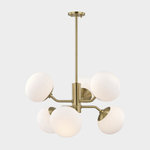
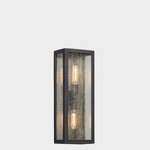
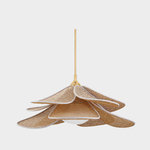


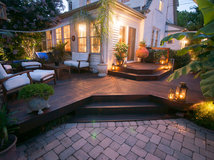
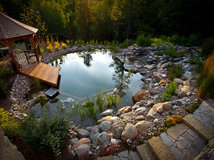


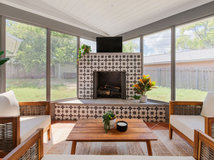
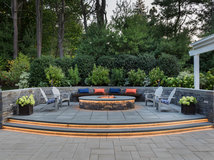









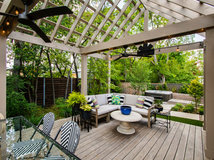
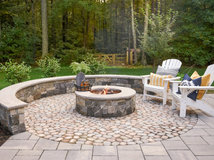


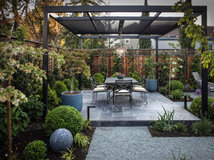
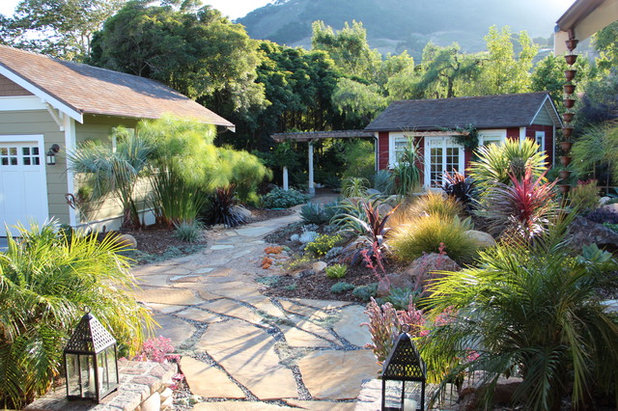
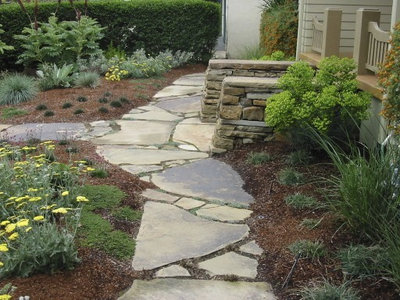
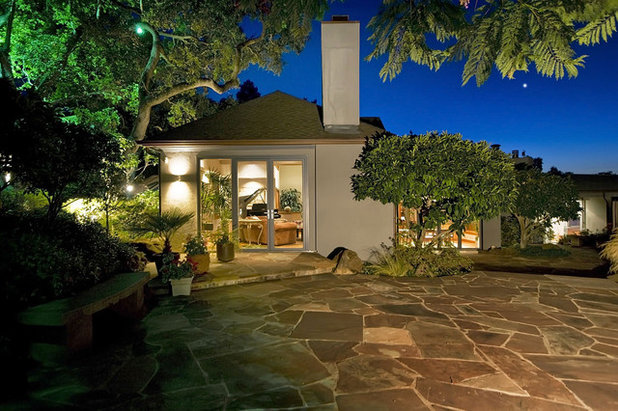
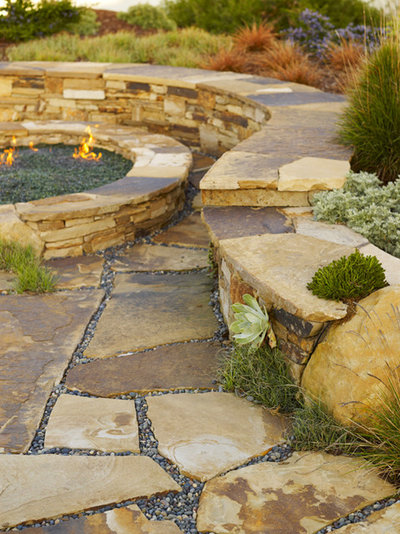
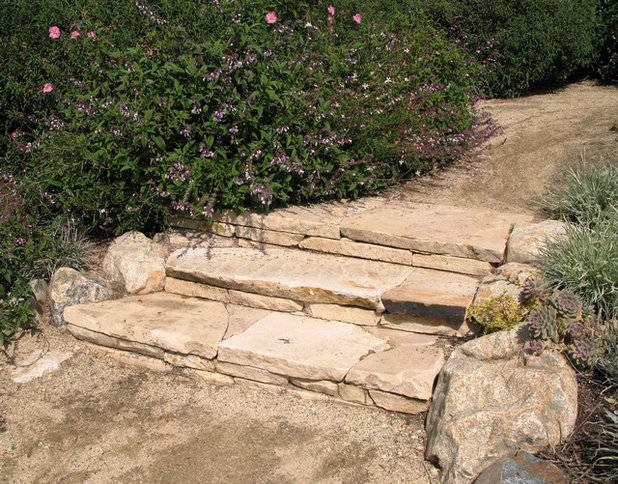
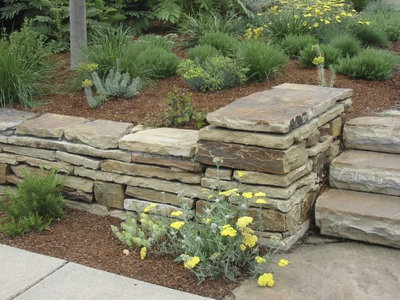
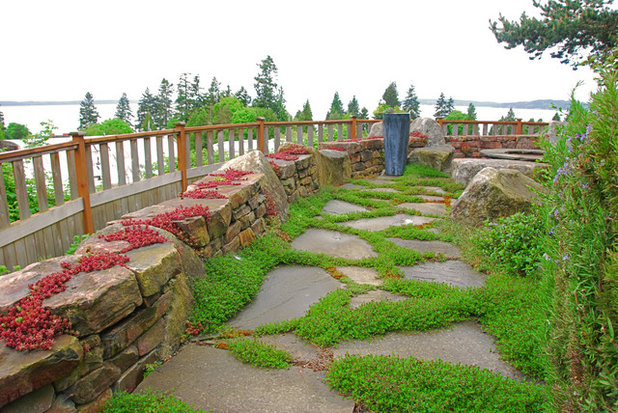
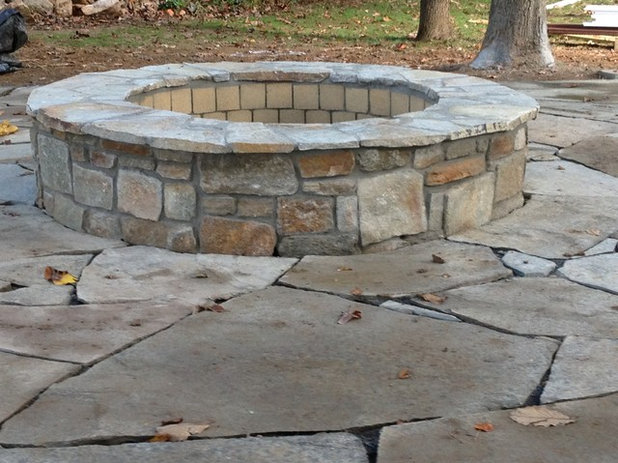








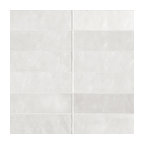
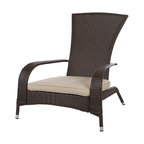
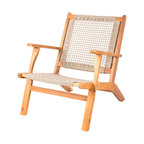
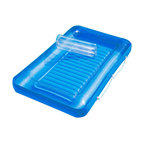
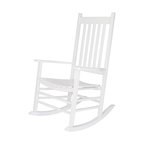

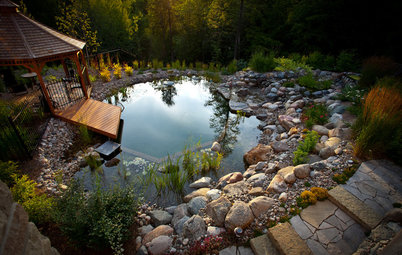
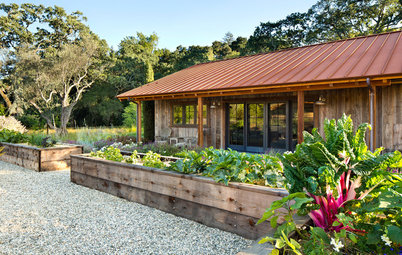
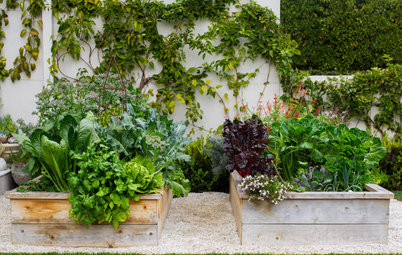
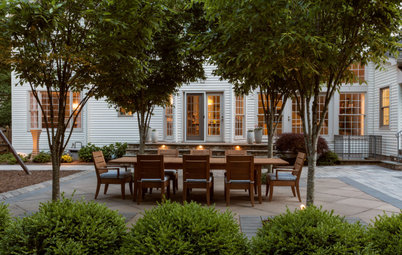
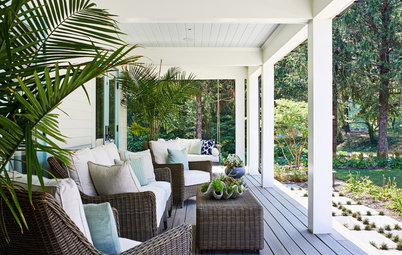
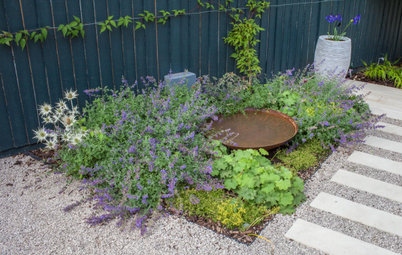
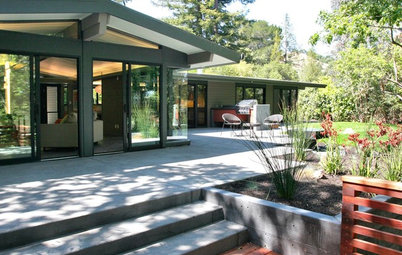
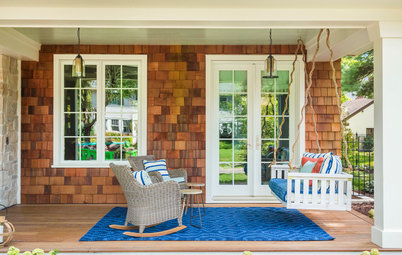
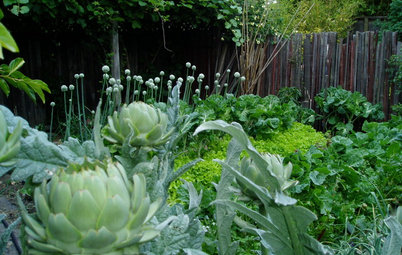
Photos, Maggie?
Yes. I will post some. The room has an adobe fireplace and a claw foot tub, also painted black.
On the subject of fire pits, limestone really must be lined, as it will sometimes explode when super hot. One thing that works is to use an old tire rim from a truck or larger vehicle. Simply lay up your stone around the rim.